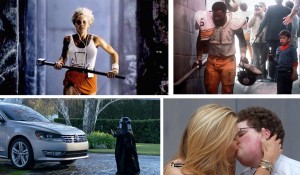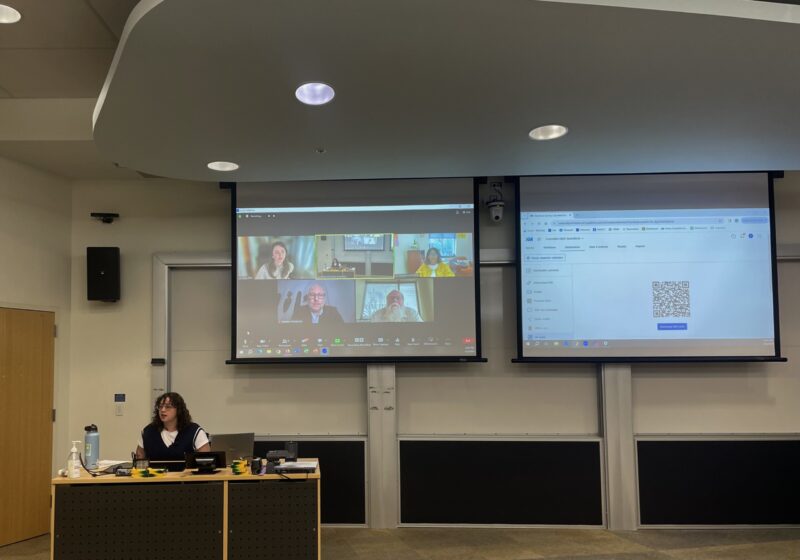Commercials. Most people could live without them. However, once a year, Americans celebrate the nuisance of advertisement: the Super Bowl.
The Super Bowl is perennially one of the most watched television events in the United States, with the 2012 game surpassing the M*A*S*H series finale as number one in this category. The excitement and buzz associated with the game brings with them the lucrative opportunity to advertise. Ever since the Super Bowl exploded onto the scene in 1967, companies have been competing for these precious commercial spots. Viewing and dissecting Super Bowl commercials has now become as important as the game itself.
These ads, given the number of potential consumers watching them, require ingenuity. On top of the limited time to catch customers, the humor and ridiculousness are exacerbated by the absurd cost of airtime — $3.8 to 4 million per 30-second spot. The GoDaddy.com commercials of recent years have epitomized these characteristics, with hints in the commercials of risqué material of celebrities on the website. As entertaining as the E-Trade baby is, the humor can cloud communication with the customer.
“Does the humor take away from what they are selling?” William E. Simon School of Business Administration Executive Professor of Marketing George Cook asked.
While the humor is engaging, Cook has different criteria for an effective ad.
“It is like ‘beauty’ as the old saying goes: it is in the eyes of the beholder. In terms of Super Bowl ads, it depends on how the viewers assess it,” he explained. “It has to be creative, motivating, engaging, innovative, entertaining, and a message that draws the viewer into the ad.”
This criteria seems to be a tall order, but a successful advertising campaign can truly establish a company. In 1999, Monster.com, a then unknown website, aired a commercial titled, “When I Grow Up,” in which a series of children recited morbid truths about the working world. It ended with the slogan “there’s a better job out there.” This ad led to a spike in traffic on the site, thereby making it the household name in job searching it is today.
The importance of this advertising space to companies, despite the price, provides a forum for bold marketing strategies. Like Monster.com, Apple burst onto the scene with a commercial titled “1984.” Directed by Ridley Scott, the ad refers to George Orwell’s novel of the same name, in which the future is ruled bythe omnipresent Big Brother. The company calmed concerns of the danger of having such a powerful computer, proclaiming “you’ll see why [the actual] 1984 won’t be like ‘1984.’” Big Brother in the commercial represents IBM.
Cook went on to explain that the Super Bowl advertisements are perfect for new product introductions, new ad and promotion campaign introduction, and reminder and competitive advertising. These are exemplified through the variety of ads that are broadcast during the game.
Recently, the proliferation of social media has opened yet another avenue for these commercials. In contrast with the ‘1984’ ad, which aired only once during the Super Bowl and never again, the ads of today can be viewed beforehand. Anxious fans no longer have to wait for the big game and can now watch them an unlimited number of times on YouTube. However, the ad has the possibility of disappointing before it even airs. It can spoil the surprise, effectively killing anticipation.
“Pre-announcements can build up hype, but if the ad isn’t seen as dynamic, innovative, or exciting, I don’t think the sneak peeks work,” Cook said in an interview with the New York Times. “There may not be so much ‘wow’ or positive bounce.”
This year, Pepsi pre-released its ad of a Minnesota man speaking in a Jamaican accent. The ad angered many, who viewed it as insensitive. The publicity that arises from these early releases spreads quickly through the internet, perhaps bringing into question whether any press is necessarily good press.
The other ads of 2013 shocked, pleased, and amused their audience. Cook said that, overall, they were “underwhelming,” but he enjoyed the patriotic Jeep ad narrated by Oprah as “an ad that means and stands for something very important.” Similarly, he liked the farmer-themed Dodge ad for its nostalgia and narrator, the late Paul Harvey.
The driving forces behind those two car ads are quite evident; shots of families, communities and, most importantly, U.S. servicemen and women returning home for Jeep are juxtaposed against the romanticized role of the hardened farmer for Dodge. When brand names connect to those sorts of images, their message normally sticks.
Students had mixed feelings regarding the commercials. Both car ads were much longer than the usual Super Bowl ad spots, bothering sophomore Joe Bailey.
“Two minutes is too long. It’s a waste of time and money,” he said. While he was a proponent of ‘The Next Big Thing’ commercial with Seth Rogen and Paul Rudd, he shared Cook’s underwhelmed feeling overall.
Junior Ahsum Khan echoed this sentiment.
“There were a few good ones, but nothing really stood out,” he said.
Despite all the commotion about Super Bowl commercials, some students did not even watch them.
“The game was good, and there was Beyoncé of course, but I got up for refreshments during every break,” junior Adriana Natali said.
Brady is a member of the class of 2015.






